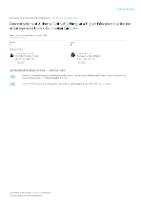Resumen
Bioaerosols are as small particles suspended in air that contain several microorganisms (bacteria, fungi, and viruses). These particles are studied because of the possible impacts that they have on the health of humans and animals in open and closed spaces. In this study, the presence of airborne fungi presents in a Higher Education Institution (HEI) of the city of Cartagena de Indias, Colombian Caribbean was evaluated. Over 4 months (June–October 2018), 128 fungal samples were collected using a two-stage cascade impactor, and the fungi present in these samples were counted, characterized, and identified. Bioaerosol concentrations were correlated with meteorological data from the Rafael Núñez Airport meteorological station to establish the possible influence of these factors on the presence of bioaerosols. The results obtained showed an average concentration of fungal aerosols of 123.71 ± 17.97 UFC/m3, with the highest proportion occurring in the morning. The predominant genera were Aspergillus (60.8%), followed by Penicillium (24.5%) and Fusarium (9.3%). According to the correlations obtained from a multivariate analysis, the meteorological parameters did not influence the presence of microorganisms at the HEI studied; however, a possible influence of emission sources such as vegetation and industry is suggested. © 2022, The Author(s) under exclusive licence to Institute of Earth Environment, Chinese Academy Sciences.














